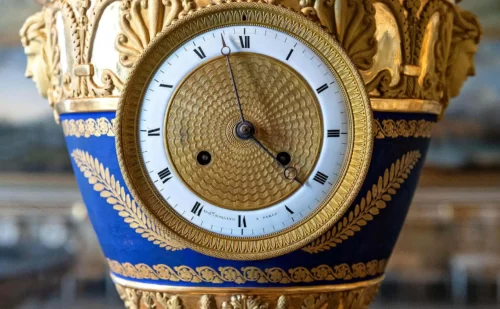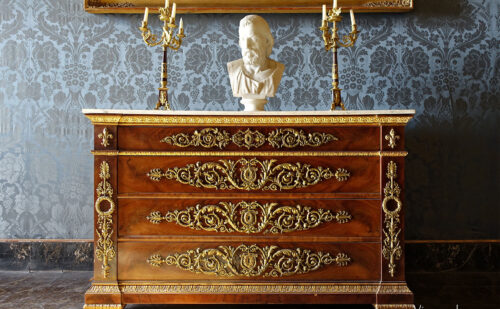Console of Queen Maria Carolina's Workroom
The work room console of Queen Maria Carolina was designed by Carlo Vanvitelli and built by Gennaro di Fiore
THE WORK ROOM CONSOLE IS VISIBLE IN: Boudoir of Queen Mary Caroline
Description of the WORK ROOM CONSOLE
The wall table dates back to 1779, when Carlo Vanvitelli (son of the Architect) commissioned to various craftsmen to complete the decorations of the Royal Apartments of the Palace of Caserta, and in 1781, when the gilder Antonio Pittarelli was working in Queen’s Cabinet and Gennaro Di Fiore asked to be paid for the furnishing of two “Cabinets”. This work was made on behalf of King Ferdinand IV of Bourbon and his wife Queen Mary Carolina.
The original design of this furniture, whose structure testify the mature phase of the Neapolitan rococo, shows Carlo Vanvitelli’s style, who directed the palace yards after the death of his father, Luigi Vanvitelli. The architect and the craftsmens created a particular shape for a console table in which the slender, curved legs of Louis XV style, sometimes harmoniously opposed, join the fascia below the tabletop with continuity. Also typical of Carlo Vanvitelli’s style is the creation of demilune furniture, also having a white and gold background, a style that quickly spread not only in the Kingdom of the two Sicilies, but also abroad, and in some cases as, for example, in Ligurian furniture, the white background was replaced with blue color.
If, often, the design of many precious furniture was due to the the talent of Carlo Vanvitelli, it is surely thanks to the immense talent of Fiore family that such projects became reality, and some furnitures was also directly designed by Gennaro di Fiore.
The artist: Gennaro di Fiore
Gennaro Di Fiore, who was the best carver and furniture designer in Naples since the mid-18th century, was head of a workshop whose activity continued under the direction of his son Nicola. The craftsman made some of the woodcut masterpieces still visible in Naples, such as the shelves of the Incurabili Pharmacy, the various ornaments made for the Capodimonte Porcelain Cabinet and those in the queen Queen’s bathroom decorations in Caserta.
Discover the collections of artistic objects of the Royal Palace of Caserta
They remain extraordinary despite 200 years of looting, theft and damage



